Brooklyn Pandemic Numbers: Creeping Up
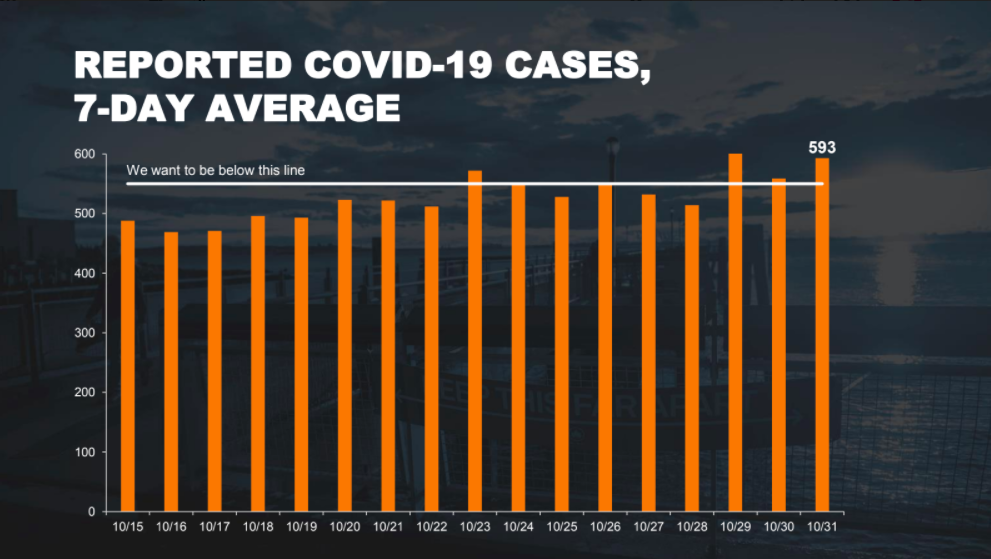
The weather has truly turned, and with it seems comes the rise in COVID-19 numbers. I’m resuming the daily reports starting today, and while the officials do not put out consistent numbers at the local level, we here will do our best to share with you what we find and call out the authorities where they fudge the numbers.
Recap: We still have three zones in Brooklyn. North of Prospect Expressway-Linden Boulevard is clear; south of it is the Yellow zone, within which is the Red Zone that is clustered around Ocean Parkway and includes bits of Boro Park, Kensington, Gravesend, and Midwood and Sheepshead Bay in it.
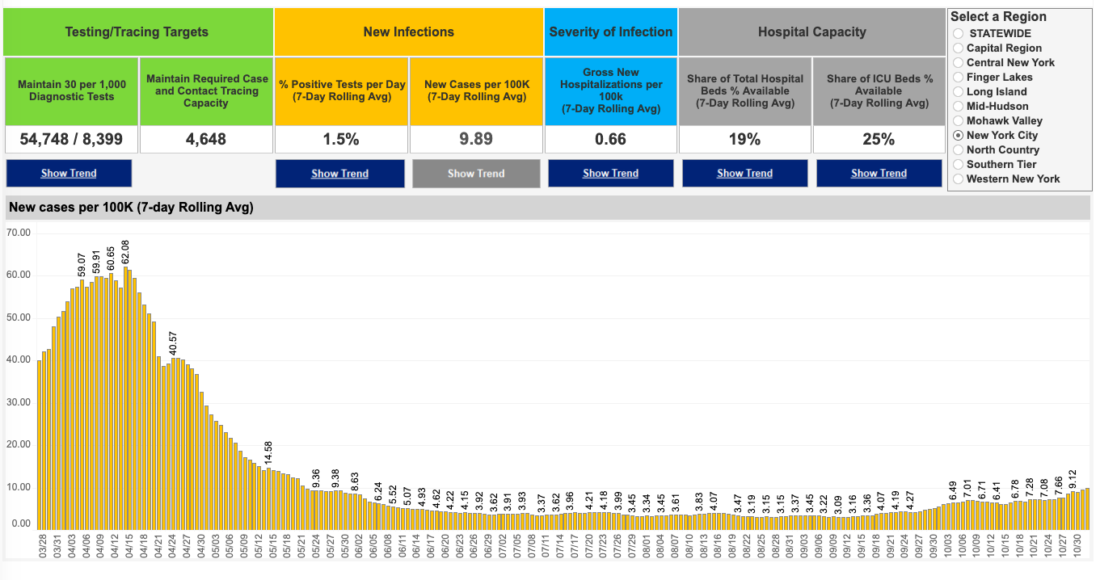
Numbers:
Yesterday 11,520 people got tested in Brooklyn, and of those, 208 tested positive – 1.8%. The 7-day average positivity rate is 1.6%. Four Brooklynites died, according to the data released by the State.

In the Red zone, the infection rate was 5.07% yesterday, while the 7-day average is at 4.25%. What’s concerning is that the rates in the Yellow zone seem to be approaching 3%. Yesterday’s infection rate was 2.53%.
The 7-day average for NYC new cases as of 10/31 was at 593, according to the Mayor, for the third straight day above the threshold of 550 cases – which means that the city is concerned.

“That is an area of concern,” Mayor said this morning, saying, “Some of that comes from just a lot more testing and a lot more testing as a good thing, and I want to keep encouraging people to get tested on a very high level, but we are watching that number carefully.”
Percentage of people testing citywide positive for COVID-19: 2.08% (threshold 5%) “We’re keeping a very close eye on the situation because we’re obviously at a point where that has gone up in recent weeks, and we take that very seriously.”
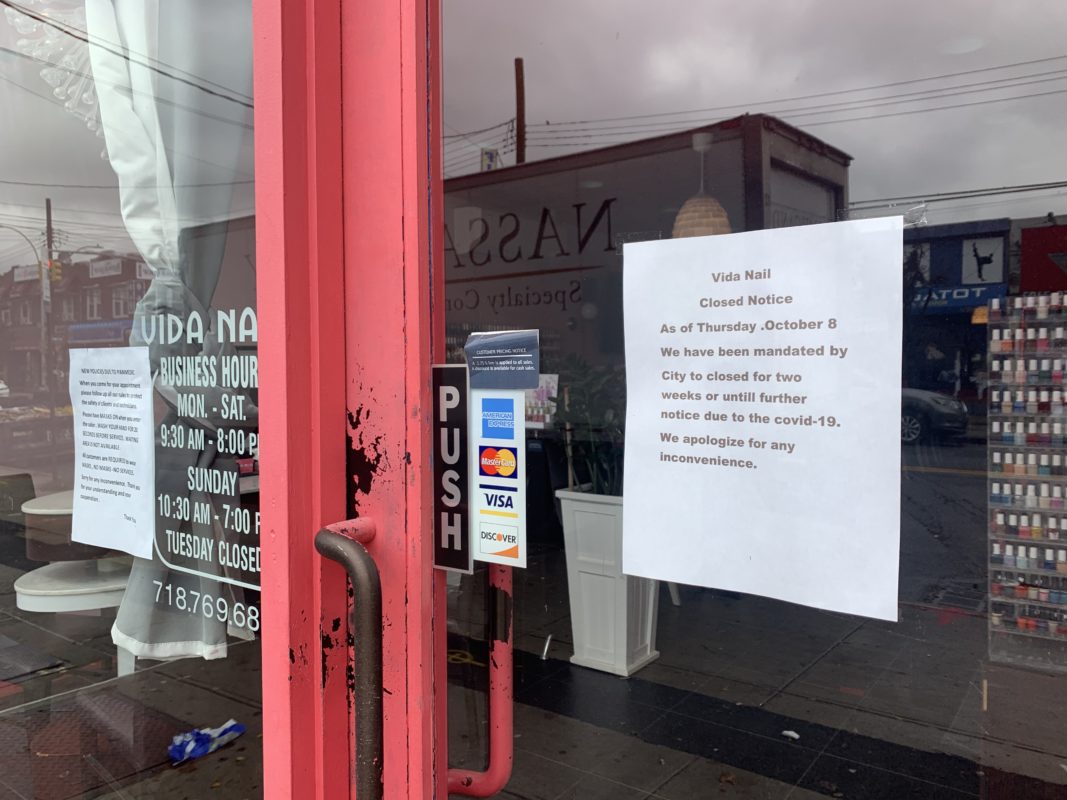
Business: Red zone means strict rules on businesses and how they operate and on gatherings of all kinds. More detail here. Avenue U commercial corridor is split smack in the middle – north side in red and southside in yellow, effectively killing business along the street.
Open Storefronts effort is joining Open Restaurants to help with holiday shopping – businesses are cautiously optimistic.
Schools: Schools can open across the city, including in the red zone, as long as they comply with the rules mandated by the state on Friday, October 30, on testing, and as long as the number of those testing does not exceed certain numbers.
This week is allegedly the only opt-in opportunity if you want your children to attend school in person at any time this school year. That is likely unlikely to be true, and as everything can change at a moment’s notice.
Currently, 8 schools across Brooklyn have been closed by the DOE due to COVID-19 for between 1 day and 2 weeks. They do not make it easy to figure out which ones or how many cases each school had. (To check if your school is one, click here)
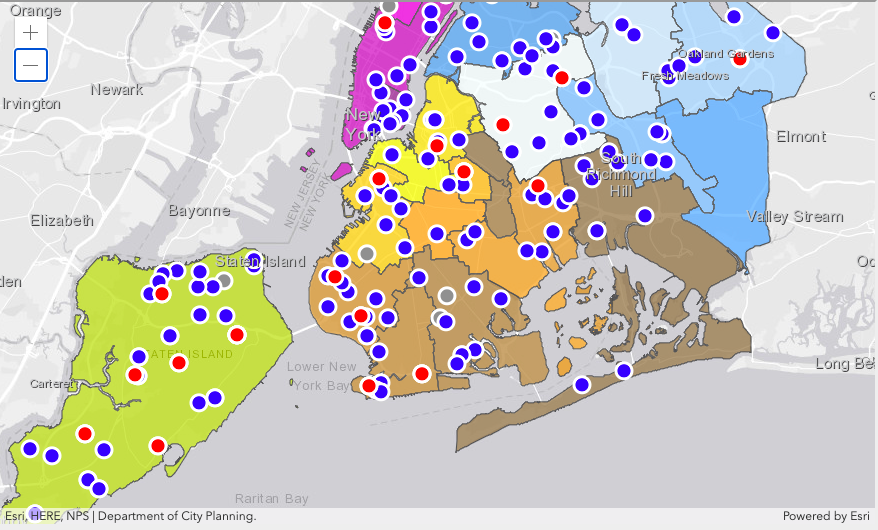
When asked at today’s press conference about the schools that have been closed for 2 weeks, he dismissed it as being just “21 out of 1,600”:
“Right now, there’s 21 that are closed for a two-week period. Although I remind you that number changes every day because some come out of that period of quarantine, and others might go in. Now, remember, that’s a meaningful number. I don’t want to belittle for those school communities. That’s a challenge and an inconvenience, to say the least, but I do want to remind you that’s 21 out of 1600. So, by any measure, the vast, vast majority of schools are open at any given time.”
Fact Check: Technically accurate, but just like with zip codes, our schools vary greatly in size. Brooklyn Tech has about 5,000 students, while some smaller elementary schools may have a couple of hundred students, so it actually does matter a great deal which schools are closed.
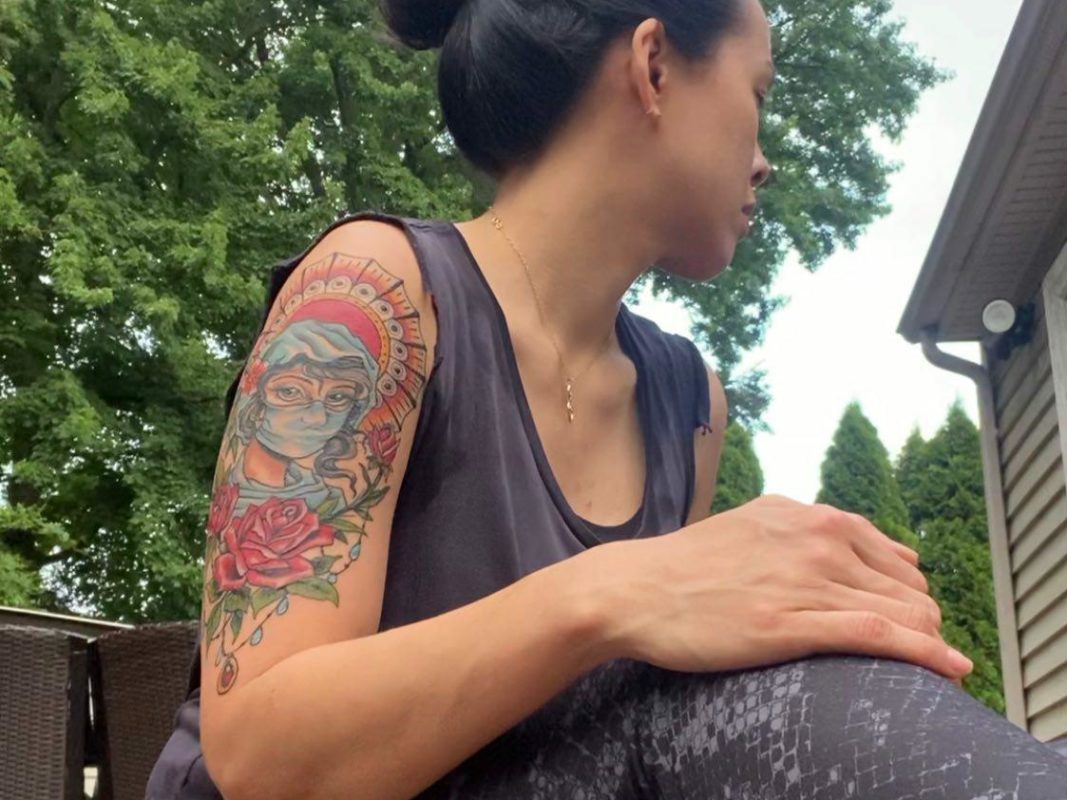
Lastly – how are you remembering this time, those who passed, and those who persisted? Some neighbors are taking to ink, others to Greenwood Cemetery, where a shrine welcomes offerings for the dead.




